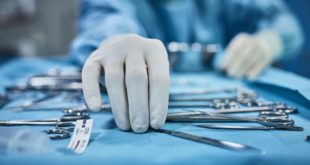Few things scare parents as much as the thought of their child having to undergo general anesthesia.
How do you prepare them beforehand? Why can’t I feed them? Will they get poked for an IV? Will they be in pain? What happens once they head back to the OR? And what are the risks of anesthesia?
This post will shed light on all of these topics and more. Let’s get started.
Depending on your child, preparing them beforehand may be one of the most challenging aspects of this process. Most children are not going to be excited about the idea of visiting a hospital or surgery center. It’s foreign and imposing to them.
It’s important to let them know that this anesthesia experience will not hurt them. Your child’s anesthesiologist will often try to make a game of the experience to help alleviate some of their anxiety. The blood pressure cuff may become a “muscle tester” to see how strong he/she is. The oxygen mask becomes an “astronaut mask” that they blow into as they lift off and drift off to sleep. Stickers, scented chapstick, and coloring markers may be used to try to make the experience feel more fun and less sterile. Letting them know that they are simply going to “take a nap” may help to alleviate some of the anxiety.
If you are coming in on the morning of surgery, please check on your facility’s fasting guidelines. Each place will have it’s own rules, but here are the standard, minimum fasting guidelines:
No water or clear liquids for at least 2 hours
No breast milk for at least 4 hours
No other liquids for at least 6 hours
No food for at least 6 hours
Fasting guidelines are always tougher for children, but the intent is to minimize the risk for gastric aspiration, which is a very serious and potentially dangerous complication. Your child’s procedure may be delayed or cancelled if they are not appropriately NPO (fasted).
How about the IV?
The difficult news is that for most procedures requiring anesthesia (ear tube placementis an exception), your kid will need to have an intravenous catheter placed. This is for obvious safety reasons. We deliver IV fluids, anesthesia medicines, pain medicines, anti-nausea medicines, and emergency medicines (should it be necessary) through the IV. It is the anesthesiologist’s main “lifeline” in taking care of your child.
The good news is that for most elective procedures, the IV can be placed after the child is asleep. Here’s how the process works:
On the day of surgery, you will arrive at the hospital and get checked in. Among other things, you will be asked questions about the procedure your child is having, the last time they had anything to eat or drink, etc. You will also speak with your anesthesiologist prior to the procedure (more on this later). Once your child’s medical history has been screened, including the presence of any allergies to meds, he/she may be premedicated with oral medication.
This is typically done for kids that are old enough to experience separation anxiety. The most common oral medicine is Versed (or Midazolam) an anti-anxiety drug that functions to make kids (and adults) more calm, less anxious, and also has amnestic properties. This medicine may also be mixed with other medicines, such as a non-steroidal anti-inflammatory pain medicine, like Tylenol. Keep a close eye on your child once this medicine is given, as it can hinder their ability to maintain their balance as they become sedated. If they are in a gurney, be sure the protective side rails are in the “up” position. If you are holding them in your lap, make sure you have a good hold of them.
This premedication is intended to facilitate and improve your child’s experience as they head back to the operating room. There is also some thought that children receiving the premed may wake up from anesthesia less agitated (we discuss this below). With Versed on board, they often will not remember much after the medicine has had a chance to take effect. Most hospitals that I have worked in do not allow parents to go back into the OR. The few that do, only allow you to be present for the initial phase of using the anesthesia gases to place the child under general anesthesia (prior to IV placement). This can sometimes be very frightening for parents.
Once inside the operating room, standard monitors will be placed on the child (just like adults). This includes blood pressure cuff, EKG leads, and pulse oximetry. At this point, your child will be placed under general anesthesia as they breathe through a mask which contains a mixture of oxygen and anesthesia gases (inhalational induction of general anesthesia). After they are sufficiently “asleep” and unaware of their surroundings, the IV will be placed. Things are done this way to make the IV placement as atraumatic as possible.
***Sidenote: This is the typical process for an elective procedure. If your child must undergo an emergency procedure, it may be safer to place the IV beforehand and have it ready to induce anesthesia more quickly. Certain medical conditions may also make this the safer option. Your anesthesiologist will make this determination and discuss the anesthesia plan with you prior to proceeding.
Once the IV is in place, the anesthesiologist will proceed with placing an airway device (either an LMA or endotracheal tube) for delivery of oxygen and anesthesia gases (and elimination of carbon dioxide) for the duration of the procedure. This will be supplemented through the IV with pain medicine, anti-nausea medicine, antibiotics and any other medicine/fluids that are necessary to get your child through the surgery.
Once the surgery is completed, the anesthesia will be turned off and the breathing device will be removed once your child is able to breathe on their own. Your kid will then be taken to the recovery room where he/she will be closely observed by nurses to make sure the anesthesia has appropriately worn off, that pain and nausea are controlled, and that your child is generally returning back to their pre-operative state. Depending on the policies of your center, you may or may not be allowed into the initial recovery area. Regardless, the entire team will work to get you back at your child’s side as quickly and safely as possible. The parent’s presence is often the most comforting thing to a child waking up from surgery and anesthesia.
The same side effects/complications of general anesthesia that are present for adults are also valid for children. You can find them here.
A few things, however, are more unique to children. Kids are more likely, for example, to wake up from anesthesia in a confused state. This is known as emergence delirium, or emergence agitation. It usually lasts for only seconds to minutes and the child typically returns to a more calm state once they familiarize with their surroundings.
Most healthy children won’t have much of a medical or surgical history, so be sure to discuss with your anesthesiologist any family history of trouble with anesthesia. One very rare but dangerous complication of anesthesia is malignant hyperthermia. There is also a genetic component to this disease. Your anesthesiologist will have to make certain adjustments to their anesthetic plan if your child has had MH or if there is a strong family history.
If your child has a personal history, or if there is a family history, of muscle disorders (dystrophies) be sure to pass this information to your provider. There are many forms and variations of these muscle disorders. Some of the more familiar names are Duchenne muscular dystrophy and Becker muscular dystrophy. They more commonly affect males and there can be other organ systems involved. Your anesthesiologist will definitely want to take a detailed history if your child has one of these rare diagnoses. Certain paralytic medicines could cause major problems and should be avoided in these children.
Children are not simply small adults. They have a unique physiology that changes as they mature and grow. Your anesthesiologist has dedicated a significant amount of their residency training to focusing specifically on pediatric anesthesia. There are also fellowship trained pediatric anesthesiologists. These folks have dedicated a year of additional training, after completing their residency, to specifically taking care of children (often very sick and very small kids). You will often find these heroes at children’s hospitals, taking care of the sickest and most fragile kids undergoing all types of procedures.
Hopefully, this post has provided some insight to the process of pediatric anesthesia and what happens after you have entrusted your most precious asset into the hands of others. We take this responsibility seriously and consider it a huge privilege to be a part of your child’s care.
If you have any questions that were not answered, post them in the comments section (or in the forums).
And if you have gone through this process with your child, please include your experience, good or bad, in the comments below.
I look forward to continuing the conversation.
 Anesthesia Myths: Get the Facts, Lose the Fear | Your #1 Anesthesia Resource in Simple language
Anesthesia Myths: Get the Facts, Lose the Fear | Your #1 Anesthesia Resource in Simple language




